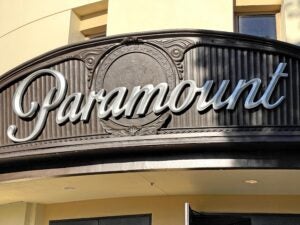 Mike Finnegan will speak at AdExchanger’s Omni.Digital conference in Chicago on September 8.
Mike Finnegan will speak at AdExchanger’s Omni.Digital conference in Chicago on September 8.
Live Nation is coining a new term to describe how it’s enabling data-driven marketing for festival advertisers: festech.
Festivalgoers register their RFID [radio frequency identification] wristbands via email or Facebook and use them for entry and payment. They can also tap their bands at advertisers’ booths to unlock experiences or try product samples.
Because the wristbands connect to an email address or Facebook account, marketers can target festivalgoers before, during and after the show on a one-to-one basis. Live Nation can work with Nielsen and Datalogix to help measure sales lift.
The wristbands are unleashing a firehose of data that Live Nation is now grappling with. Each Monday after a festival ends, it receives multiple data streams to cleanse and combine. Next festival season, it wants that process to be more automated.
Next year Live Nation anticipates that all of its festivals will use the RFID wristbands for entry, up from 60% this year. That means more data, but also more complete insights for its festival sponsors.
Leading the charge with Live Nation’s location data is Mike Finnegan. The Xaxis and MEC vet joined Live Nation in 2014 as VP of programmatic and product innovation.
AdExchanger spoke with Finnegan about how Live Nation is using location data for the marketers at its 36 festivals a year, including Bonnaroo, Electric Daisy Carnival and Lollapalooza.
AdExchanger: Why are brands interested in sponsoring festivals?
MIKE FINNEGAN: We have massive penetration into the 18-year-old to 24-year-old demographic, and it’s a great place to drive first trials or first adoption. But you also need to drive awareness after the festival – we want to make sure we have a lasting impact.
What can you do with digital pre-festival or post-festival?
A lot of brands’ goals are having people show up to the festival execution [a branded experience like a lounge, product sampling, etc.]. There is tons of social chatter before the festival, so they can be part of that and drive attendance at the activation, [with messages like] “While you are at Bonnaroo, swing by at this time.” During the festival, it’s brand immersion. And then for brands that have lead capture aspiration or marketing goals, it’s post-festival retargeting and re-engagement.
How does Live Nation organize its data?
We have built up fan insights, which is a database of 120 million profiles, over the past five to six years. That’s transaction-based and includes Ticketmaster and all the sites in the family. The CRM is much more transaction-based, and the DMP is user behavior: people who favorite an artist in the app, or go to Lollapalloza.com to see when the event is. When I joined, the Krux DMP was just getting off the ground. Since then, it’s evolved as our business evolves. We didn’t own Bonnaroo, we didn’t own C3, which runs Lollapalooza, and we didn’t own Founders Entertainment [which runs Governors Ball]. We are getting all that data into the fold.
Do you integrate user data from mobile phones as well?
Every festival has an app, and we have 75%-plus adoption because it’s their lifeline. We have geofencing across the entire campus. If a brand has an offer for all fans, we can push messages pre-festival and during the festival. We also have proximity marketing where someone who walks by will get notifications. It could be to stop by [a booth] for a DJ signing, and try out this beverage and product while you’re there. But we are very sensitive to how many push notifications we send out, and ensuring that the fan experience is not tainted by overcommunication.
How do you deal with connectivity dead zones at events?
We grapple with that often. Over the past few years, network connectivity has improved, but when you cram 125,000 people into a small, remote area, you will start sucking down the network. We have brands come in and sponsor additional Wi-Fi towers or network towers. We are launching in-venue Wi-Fi next year. That will shift the reliance from the network and into Wi-Fi.
Have brands ever discovered unusual insights about their target audience through Live Nation’s data?
We did analysis for one of our beverage sponsors of every fan that walked by their activation and dinged the beacon. They were very hot on electronic dance music [EDM] and sponsored five or six EDM festivals. We looked at what other events and musicians they were likely to go to, and surprisingly they were three times more likely to go to a country music festival. In the meeting, someone said, “I told you, they also listen to country.” It wasn’t specifically because of that [insight], [but] they decided to double down in country.
What does the future look like for this space?
This is a great, evolving space and the next advent of out-of-home. I spent a lot of time on digital out-of-home at Xaxis, and what a lot of people look out for on digital outdoor buys is who engaged with it. With drive-by billboards, that’s a challenge. When you want to do a festival activation, and allow brands to have a one-to-one or one-to-many dialogue, we think that adds value to them and brands.
This interview has been condensed and edited.











